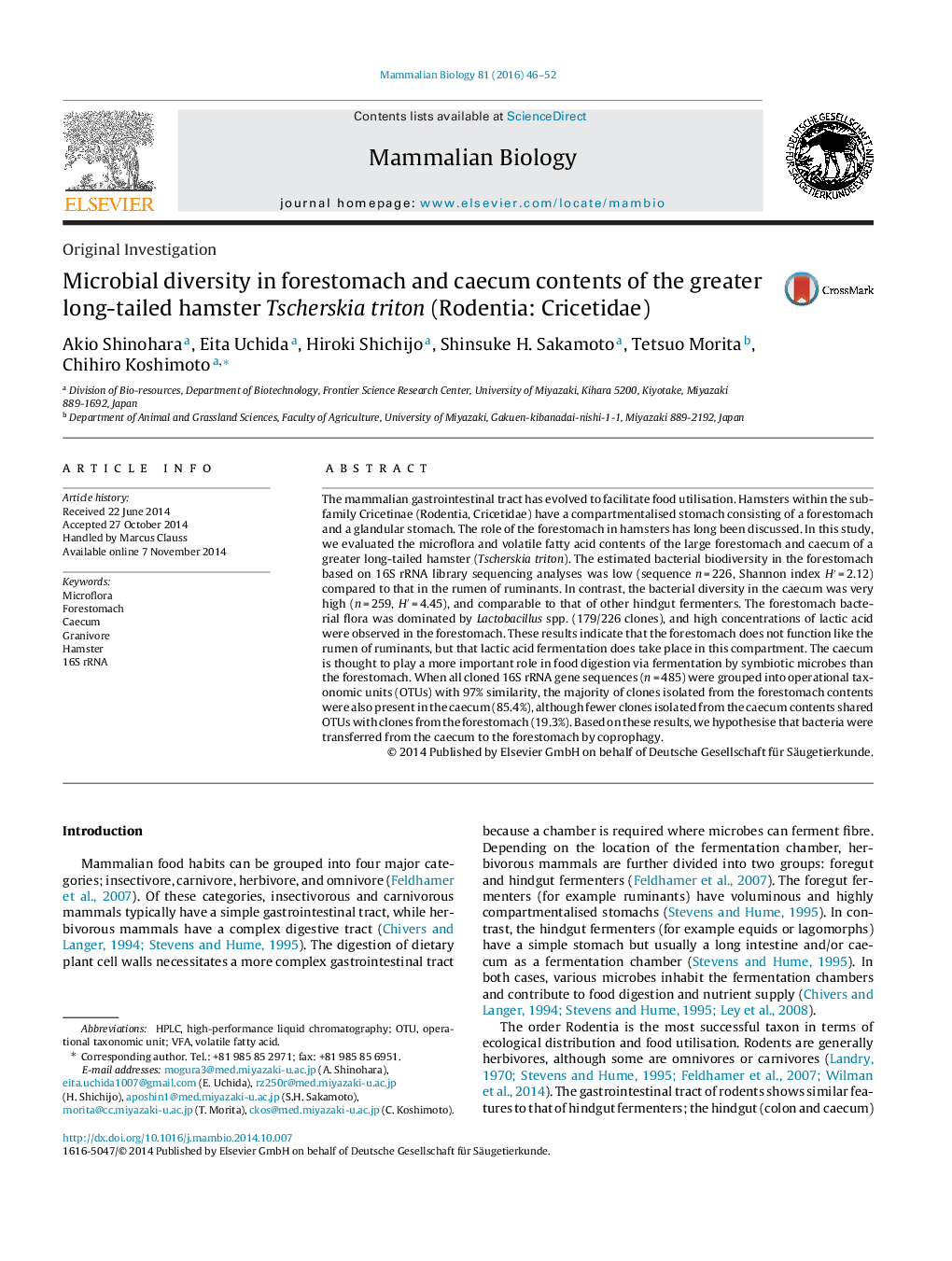| کد مقاله | کد نشریه | سال انتشار | مقاله انگلیسی | نسخه تمام متن |
|---|---|---|---|---|
| 2193354 | 1098371 | 2016 | 7 صفحه PDF | دانلود رایگان |

The mammalian gastrointestinal tract has evolved to facilitate food utilisation. Hamsters within the subfamily Cricetinae (Rodentia, Cricetidae) have a compartmentalised stomach consisting of a forestomach and a glandular stomach. The role of the forestomach in hamsters has long been discussed. In this study, we evaluated the microflora and volatile fatty acid contents of the large forestomach and caecum of a greater long-tailed hamster (Tscherskia triton). The estimated bacterial biodiversity in the forestomach based on 16S rRNA library sequencing analyses was low (sequence n = 226, Shannon index H′ = 2.12) compared to that in the rumen of ruminants. In contrast, the bacterial diversity in the caecum was very high (n = 259, H′ = 4.45), and comparable to that of other hindgut fermenters. The forestomach bacterial flora was dominated by Lactobacillus spp. (179/226 clones), and high concentrations of lactic acid were observed in the forestomach. These results indicate that the forestomach does not function like the rumen of ruminants, but that lactic acid fermentation does take place in this compartment. The caecum is thought to play a more important role in food digestion via fermentation by symbiotic microbes than the forestomach. When all cloned 16S rRNA gene sequences (n = 485) were grouped into operational taxonomic units (OTUs) with 97% similarity, the majority of clones isolated from the forestomach contents were also present in the caecum (85.4%), although fewer clones isolated from the caecum contents shared OTUs with clones from the forestomach (19.3%). Based on these results, we hypothesise that bacteria were transferred from the caecum to the forestomach by coprophagy.
Journal: Mammalian Biology - Zeitschrift für Säugetierkunde - Volume 81, Issue 1, January 2016, Pages 46–52